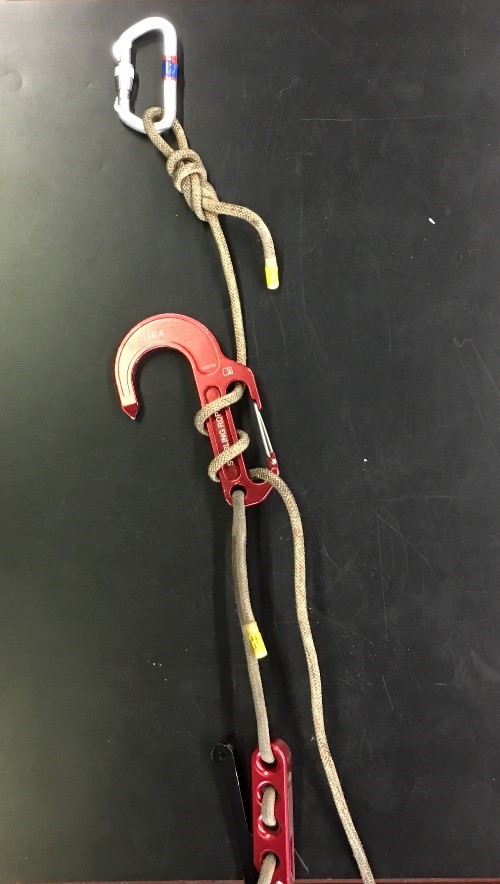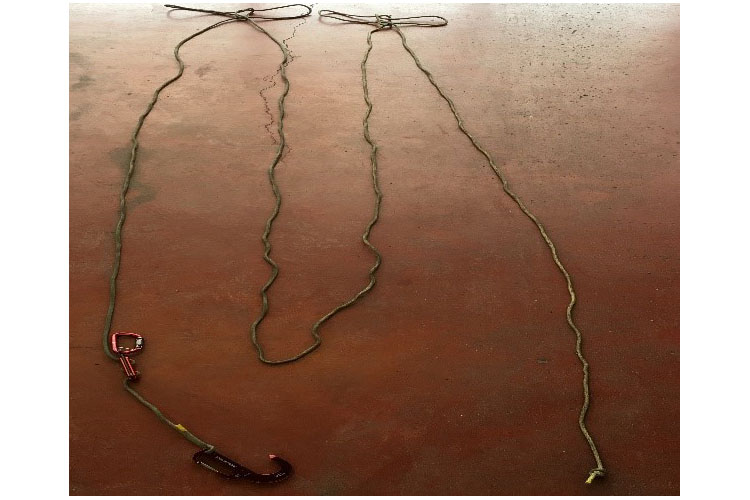
By Dennis Walton
We often about “the cost to outfit a firefighter.” When you break it all down piece by piece, it quickly becomes clear that the price is high, but the equipment is used often and under extreme conditions.
One of the most valuable pieces of equipment that you can add to the price tag is one that you will hopefully never have to use. The personal bailout system is among the most valuable elements of an individual’s turnout gear that your department can purchase for you, or that you can purchase for yourself.
RELATED: Training Minutes: The Importance of Bailout Training | Throw Back to Basics: Bailout System | Training Minutes: Low Bailout Prop | Bailout in Staten Island
With a department purchases one of these systems, it may come along with a standard operating guideline (SOG) to follow regarding the use and operation of the bailout system. Often, these SOGs may indicate that they are for personal escape only, not to be used for anything else. Taken literally, what happens when my fellow firefighter goes down next to me? Is there a way my bailout system can save their life?
First, let’s review some of the options for a bailout kit. There are many different companies that provide systems, all with their own unique designs, however all with the basic pieces. The National Fire Protection System (NFPA) has developed specific standards for all components used in escape systems, such as NFPA 1983, Standard on Life Safety Rope and Equipment for Emergency Services.
From the 2012 edition:
ESCAPE ANCHORS: Must have a minimum tensile strength of 13.5 kilonewtons (kN), or 3,034 lbs.
The anchor acts as the anchor for the bailout kit. It can be attached to part of the building, a window sill, a pole, or anything else that can support the weight of the person using it.
SEWN EYES: Shall have a minimum breaking strength (MBS) of at least 85 percent of the strength of the rope, OR shall have an MBS of not less than 13.5 kN.
FIRE ESCAPE ROPES: Shall have a minimum tensile strength of 13.5 kN. Elongation of at least 1 percent at 10 percent of the MBS. The diameter shall be no smaller than 7.5mm and no larger than 9.5mm. The fiber cannot melt at less than 400º F.
The rope works with the descender to guide the user to their destination. The materials that the rope is made of depends on the desired use: fire tech, personal escape, or safe tech. For instance, a fire tech rope is fire rated, which means it can stand up to the heat of the flames. A personal escape rope is made to be lighter and easier to carry.
DESCENT CONTROL DEVICES: Shall have a minimum MBS of 13.5 kN. They must not require more than 20 pounds of force to play out rope, and impact force when dropped shall not exceed 8 kN.
The descender is the part of the bailout system that allows the user to control the speed of their descent. The descender uses friction to slow or speed up the descent, depending on what the user needs at the time.
CARABINERS: No escape standard exists for carabiners, but technical use requires an overall strength of 27 kN, as well as an open gate strength of 7 kN and a minor axis strength of 7 kN. The carabiner must have a locking mechanism.
All these parts together make up an escape system.
No matter which system you or your department chooses, training is key. You don’t want the first time touching the system to be when you are heading out the window on it. Training should include different anchor points, bailout heights, and unstable conditions. Muscle memory is key. Knowing how the system is stored in your gear and how it deploys can make a big difference when it is needed.
Using different anchor points will help you gain confidence in yourself and the system. If your hook is small enough, it can wrap a door hinge for a secure anchor point or any other fixed, solid anchor. The hook included in most kits alone is a great anchor when used correctly in the window.
Once you are out the window, you are usually out of the immediate harm’s way. Using your descent device, lower yourself to safety on the ground or to a lower floor. Keep in mind that if you went out the window before your partner, he or she will be right behind you. The second person can apply their anchor on top of yours or on the other side of the window and follow you out.
A bailout system doesn’t have to stop at personal use. When your fellow firefighter goes down next to you, you can prepare yourself to start to make forward progress with tools in your own pocket until the RIT team gets to your location to assist.
For a firefighter drag or lift up a stairway or through a floor, a 25-foot section of webbing can be turned into a harness on a downed firefighter. Your personal bailout system can quickly be turned into a 3:1 mechanical advantage and attached to the harness to assist in moving the downed firefighter. For the companies that carry a “FAST board,” this same technique can be added to assist the pulling of loaded board up a set of stairs.
To lower a down or injured firefighter from an upper floor, you can attach the same type webbing harness. Deploy your personal bailout system and attach it to the downed firefighter’s rescue harness. Wrapping the hook of the bailout system with at least three wraps will act as your descender, saving the system’s regular descender to get yourself out as needed. For this technique, it is key to place the descender on top of the rope and wrap from bottom up. Using yourself as an anchor at the base of the window, the injured firefighter can be lowered at a controlled decent and then you can perform a self-rescue if needed.

RELATED: Training Days: The John Nance Drill | Training Minutes: Rescuing a Firefighter Who Has Fallen Through the Floor
We have all heard of the Nance Drill: ropes with the use of a “handcuff” knot to raise a firefighter that has fallen to the floor below. For this to happen, most of the time we have to wait for a rope to be brought in from the outside crew or rapid intervention team. By using a bailout system that is already in your pocket, you can save precious minutes.

A technique that was passed onto me by a great mentor, Dave Gallagher, is to make a “W” out of the rope (above), and at two points make handcuff knots. This will then allow two to four firefighters to perform the raise. If this is done with a 50-foot piece of rope from your bailout system, you will be able to raise a firefighter from about 11 feet below.
All of these techniques require ongoing training. Don’t limit yourself, and create other options for things you already have in your pockets when available. They might save someone else’s life, along with your own.
 Dennis Walton is a career firefighter for the city of Allentown, Pennsylvania. He is also an instructor for On Scene Training Associates, LLC, a FDIC International H.O.T. instructor, and an a djunct instructor at the Pennsylvania State Fire Academy.
Dennis Walton is a career firefighter for the city of Allentown, Pennsylvania. He is also an instructor for On Scene Training Associates, LLC, a FDIC International H.O.T. instructor, and an a djunct instructor at the Pennsylvania State Fire Academy.
MORE
Maximizing Roof Operations: Flat Roofs
Making the Most of Roof Operations
Young Leadership’s Responsibilities to the Youngest Generation

